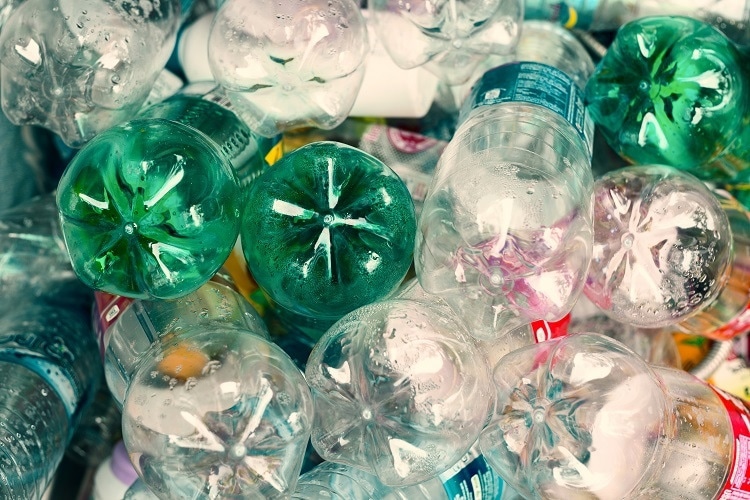
Image Credit:Shutterstock/TeerasakLadnongkhun
Microplastics are miniscule, manmade pieces of plastic that range from 5 millimeters to 100 nanometers across. These tiny bits are filling oceans, seas and waterways, working their way into the organisms that live there in the process.
Microplastics originate from a range of sources, including from bigger plastic debris that breaks down into smaller and smaller bits. Microbeads are a kind of microplastic that are very small pieces of manufactured polyethylene plastic added to health and beauty products as exfoliants. These miniscule particles readily move through water filtration systems and wind up in the oceans, lakes and other bodies of water.
Microplastics have also been detected in the atmosphere, both in indoor and outdoor environments. While microplastics may be inhaled, experts have said most are likely cleared by the lungs and airways with other particular matter we normally inhale. Although, there is a chance microplastics may persist in the airways, causing localized biological reactions such as inflammation, particularly in people with compromised health.
Microplastics have also been observed the food chain. Research has found consumer-grade mussels in Europe could contain around 90 microplastics. Researchers have also discovered microplastics in honey, beer and bottled water.
In fact, the biggest known source of microplastics in the food production system is bottled water. When scientists reviewed a range of kinds of glass and plastic water bottles, they discovered microplastics in most of them.
How Microplastics are Created
Most microplastics come from manufactured products that are broken down through degradation, a chemical process that dramatically breaks down polymers. Because the integrity of plastics is based on their significant molecular weight, substantial degradation weakens the material and substantially degraded plastics can become fragile enough to break apart into tiny bits. Even these fragments, often not visible to the naked eye, can go through further degradation, with the carbon in polymer being modified into CO2, which can then be taken up into marine biomass.
When standard polymers like LDPE, HDPE, PP and nylons are in a marine environment, UV-B radiation from sunlight triggers the primary breakdown process, photo-oxidative degradation. Once started, this degradation proceeds thermooxidatively without need added exposure to UV radiation. This degradation sequence can progress if oxygen is available to the process.
Other kinds of degradation are much slower compared to light-induced oxidation. Hydrolysis is generally not a considerable degradation process in seawater. While all biomaterials, including plastics, will usually biodegrade in marine environs, the speed of this sequence, is many orders of magnitude slower compared to light-induced oxidative degradation.
The Study of Microplastics
A growing area of study, not a great deal is known about microplastics and their overall effects just yet. Unlike bigger plastic fragments, microplastics are not easily visible to the naked eye. Dragging a net through water does not gather the smallest microplastics and there currently is no sufficient standard procedure for their enumeration in water or sand.
A suggested procedure involves filtering water specimens through a coarse filter to pick out bigger microplastics. Sediment or sand specimens are slurried in saline water to make microplastics to float to the top, where they can be collected. A mineral salt may be dissolved in the gathered sea water or slurry sample to boost the water density to the point microplastic fragments float to the surface. Concentrating sea water by evaporation can also concentrate the microplastic content of a sample at the surface.
Microplastics in surface water specimens can be visualized under a microscope by staining them with a lipophilic dye. The water specimens will also contain microbiota like plankton of the same size range however, these are not stained by lipophilic dyes.
Digestion of the sample with mineral acid can be used to get rid of the biomass impurities as the process will not have any effect on the microplastics. Suspensions containing microplastics might be examined using optical microscopy, electron microscopy or spectroscopy techniques.
Disclaimer: The views expressed here are those of the author expressed in their private capacity and do not necessarily represent the views of AZoM.com Limited T/A AZoNetwork the owner and operator of this website. This disclaimer forms part of the Terms and conditions of use of this website.